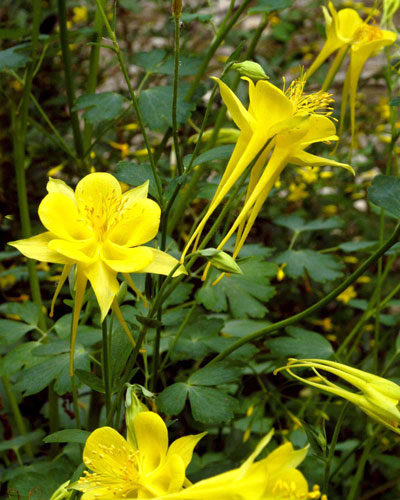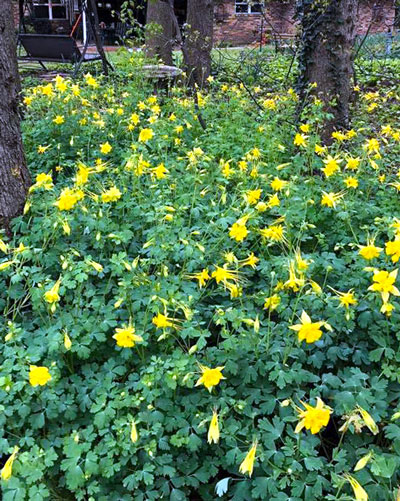Plant of the Week: April 28, 2022

This is simply a great plant. Found and developed by one of Texas’ all-time finest plant people Greg Grant, along with support of Texas AgriLife Extension Service co-horts Drs. Jerry Parsons and Steve George, Texas Gold soon rose to Texas SuperStar® designation.
The crazy thing is that the mama plants came from a spring-driven wetland in ultra-arid Southwest Texas out in the Big Bend Country.

So, back to my first time to see this plant. It was at a gathering of horticulturists at the lovely College Station home of Dr. William Welch. (I’m dropping names like a hailstorm here – the best names our state has to offer.) Bill had it growing alongside his driveway and we all came out to ogle it.
By the next spring I had some of my own, and I’ve never looked back. In fact, some years later Lynn and I hiked to a remote waterfall in Big Bend National Park where I knew that there was another small stand of its mother plants growing.

The simple facts to know…
Most people who try this plant do very well with it.
• Shade or early morning sun with afternoon shade. Think of what you’d give hostas, ferns, summer phlox, hellebores, ajuga and oxalis and it will do wonderfully right alongside them.
• Give it rich, consistently moist garden soil. Think of it growing alongside those waterfalls with mist splashing all around it.
• Its handsome blue-green foliage shows up in late fall and early each spring, then gradually dies back a month or two after the plants finish blooming.
• Texas Gold columbine is a short-lived perennial (2-3 years), but it reseeds itself freely.
• Mulch your beds with compost or shredded tree leaves. As seedlings emerge you can easily dig them out and replant them into the same bed or into one of mine.
